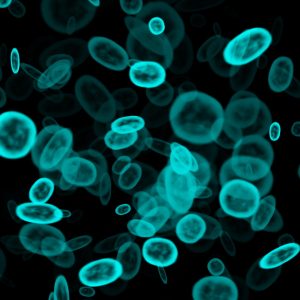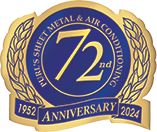 As an air conditioning contractor in Madera, CA with many decades of history, our technicians have seen almost every type of AC system problem possible. You can trust us when we tell you that mold in an air conditioning system does happen, and more often then people imagine. It’s not just a cosmetic problem. We’ll explain the trouble mold causes, which include health hazards.
As an air conditioning contractor in Madera, CA with many decades of history, our technicians have seen almost every type of AC system problem possible. You can trust us when we tell you that mold in an air conditioning system does happen, and more often then people imagine. It’s not just a cosmetic problem. We’ll explain the trouble mold causes, which include health hazards.
How Mold Develops in an Air Conditioning Systems
For mold to develop, there must be a sufficient amount of moisture. Mold grows in shaded and humid areas, and unfortunately this includes air conditioning systems.
Mold often appears on window air conditioning systems because their outdoor exposure makes it easy for water to get inside. However, the central air conditioning system cooling in your house can have mold develop in the indoor unit if there’s a problem with condensate drainage.
What is condensate drainage?
As an air conditioning system runs, the indoor coils evaporate refrigerant, which draws heat from the air. The process also causes water moisture in the air to condense along the coils. The moisture drips off the coils and into a pan below, where a condensate drain and pump removes the water from the house.
Condensate drainage problems increase humidity
When the condensate drain isn’t working as it should, water remains inside the air conditioner and raises humidity. This can happen because of algal growth in the condensate drain or blockage in the line carrying the water outside. The condensate pump may also burn out. Even a slow drain can lead to a spike in humidity inside the AC system. No matter the source of the humidity, it increases the chance of mold growth.
The Problems With a Moldy AC System
The idea of a moldy air conditioner certainly sounds “icky,” but the reality is much worse.
“Dirty sock syndrome”
Mold usually develops along the evaporator coils inside the air conditioner. Since all the air pushed into the ventilation system must first pass through these coils, the air picks up the unpleasant stench of mold and spreads the odor around the house. This is known as “dirty sock syndrome” because it smells as pleasant as a pile of dirty socks.
Inefficient performance
When mold grows along the evaporator coils, it’s harder for the air conditioning system to draw heat from the air moving over the coils. This lowers the efficiency of the AC and contributes to a rise in electrical bills.
Harmful mold spores
The EPA recommends homeowners stop using an AC as soon as they believe there’s mold in it. Although many molds are harmless, others (such as black mold) release harmful microscopic spores into the air that cause illness.
When you suspect you have mold in your air conditioning system, please don’t try to remove it yourself. Call our HVAC professionals. They can determine what has caused the mold to start growing so it can be repaired, and they’ll remove the mold thoroughly. In cases of extremely old air conditioners (more than 15 years old), our technicians may recommend replacing the system.
Schedule AC service with Purl’s Sheet Metal & Air Conditioning: “Quality Is the Cornerstone of Our Success” since 1952.

